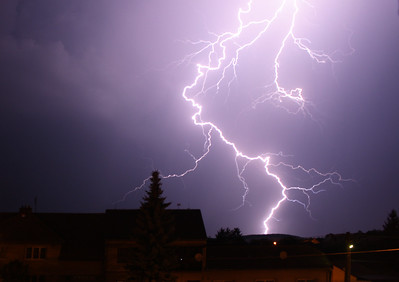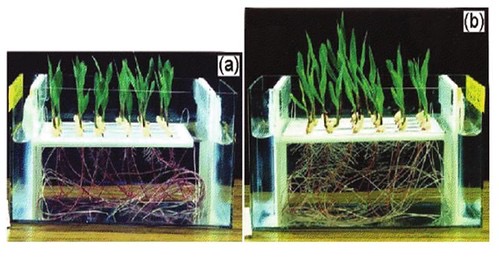Nature & Electricity – Thunderstorms: Nature’s Crop-Boosting Technology
Note: This article is a chapter excerpt from my book, Electro-Horticulture: The Secret to Faster Growth, Larger Yields, & More.... Using Electricity! Enjoy…
The fabric of all things in physical form on this planet is based on elemental atomic structure. Biological entities are composed of interconnected cellular structures forming tissues, organs and biochemical networks. At the core are atomic elements, each of which is associated with some level of electrical charge. These charges are the basis for the forces of electrochemical attraction and repulsion that occur within the cellular structures within all living things.
The interactions between these components are vast, making use of many forms of information and electro-biological mechanisms including electrochemistry, biophysics, genetics and perhaps other forms of study that are beyond our current understanding, such as the studies of subtle energies, bioenergetics and quantum physics, which are still in their infancy.
For example, not only are large molecules such as proteins usually electrically charged, but did you know that DNA itself is also highly charged? It is these electrostatic forces that hold the molecule together and give it structure and strength. [via Electric Forces in Biology]
Growth with Electricity is "Natural"
Now that we know that electrically-based particles and forces are present within all of life, is it too far-fetched to consider that electrical forces are not only intrinsic to life, but are necessary to thrive?
Atmospheric Electricity
Flashes, booms and brilliant light shows were the earliest evidence that electricity is a naturally powerful force, intrinsically available to humanity. From the legend of Benjamin Franklin and his 1752 kite-flying experiment), this discovery of the presence and subsequent capture of atmospheric electricity set the stage for centuries’ worth of scientific exploration, discovery and engineering.

Source: Flickr
There are between 2,000 and 6,000 thunderstorms in progress at any one time, on any given day, all over the Earth. As such, at any one time, there is an enormous amount of electricity located throughout the skies. So, on an average day, how much electricity is actually swirling around us?
It has been determined through many measurements that the average fair-weather electric field is approximately 100 to 300 Volts per meter at the surface of the Earth. Of course, these values are constantly in flux, changing due to a number of factors including day-night cycles, seasonal cycles, as well as upper atmosphere and space-based cycles and events. Thus if we were to take into consideration the amount of space between the surface of the Earth and the outer edge of the Earth’s atmosphere, the ionosphere, we would see that the average electrical potential across that region would be approximately 360,000 Volts at any one time. As we come down from these high altitudes, the field diminishes in strength, ending up being approximately 100 Volts per meter near ground-level. ["The Earth’s Electricity”, James McDonald, 1953]
Lightning Storms
Now that we know that plants require a standard amount of electricity in order to live, let’s see how plants respond when they’re subjected to additional amounts of electricity.
In his book, Blinded By Science, Matthew Silverstone informs us that plants can detect when a thunderstorm is on the way. Along with plant physiologist & artist, Andrew Goldsworthy, in his paper, Effects of Electrical and Electromagnetic Fields on Plants and Related Topics, he says it is suspected that in anticipation of the change in weather, they have the ability to increase their growth rate so they can increase their capacity for water absorption. Not knowing when their next drink is going to come available, they cleverly grow a little more before the arrival of the rains so they can “gorge on the extra water available.”
In the study of Paleolightning, it is speculated that lightning played a part in the genesis of early life. Further studies on the subject have found that lightning storms improve nitrogen fixation, boosting the development of plant life (Uman, 1996). Yet, there may be other factors at play, according to the research of L.E. Murr who wrote about the stimulation effect of plants in electrostatic fields.
What’s interesting is that there have been many reports over the ages that plants generally look healthier after a thunderstorm. As an example, one time in late 2013 on GardenWeb, a man named Derek said, “When it rains, all of my plants grow a lot more than with just plain old watering in the morning. It’s rained for about 3 days on and off here with some sunshine and my pumpkin vines have easily grown 6 inches but it will take a week for them to grow that much with no rain and just water?”
Most experts state that the primary reason for this effect is that lightning turns atmospheric nitrogen gas into a form (nitrous oxide) more easily assimilated, which is very beneficial for plants. So when nitrogen-enriched rain falls from the skies, it gives them a boost.
My hypothesis is based on information covered later in the book, where an abundance of free-floating ions from looming electrical storms create a charge imbalance on plant cell walls. As you will see, this imbalance will lead to a wide array of physiological changes within the plants ranging from increased growth rate to increased pigmentation and photosynthesis abilities, which is more in alignment with Goldsworthy’s and Silverstone’s thoughts.
There are other forms of atmospheric electricity that have also been found to be beneficial to plant life… We’ll get into those next time.
- The high-latitude display of the aurora borealis
- The bombardment of the Earth by cosmic radiation
- Telluric or “Earth” currents
Electric Fields and Plant Life
Since we now understand that the air around us is naturally charged, we can form a hypothesis that states that plants (and perhaps all surface life as well) require exposure to electric fields in order to grow properly. This idea has been tested a number of times throughout history.
There have been a few studies that have shown that plants can have a difficult time surviving when grown under a form of electro-magnetic shielding known as a Faraday’s Cage.
One early experiment was performed in 1898 by M. Grandeau, a French agricultural chemist, and M. Leclerq who performed studies into the effect of atmospheric electricity on plants. They discovered that shielding plants from the Earth’s electric field using a grounded wire net had a detrimental effect on plant health, stating that the plants looked “feebly” [via Electricity, A Popular Electrical Journal, Volumes 4-5, Electricity Newspaper Company, 1893].
It turned out that the uncovered plants grew 50 to 60 percent better than the shielded plants. Furthermore, they found that flowering and fruiting processes were adversely affected by the lack of electric field exposure. [via Artem and Lockyer].
This has been studied in modern times too; here’s an example from Steven Magee, an author and researcher interested in the harmful effects of high-frequency electromagnetic RF radiation, that shows how plants suffer from a loss of chlorophyll content and other abnormalities when placed in an ungrounded wire cage. In this video, you’ll see how a houseplant is adversely affected by the lack of atmospheric electricity, as demonstrated by its nearly transparent, discolored, smaller and somewhat deformed leaves.
Summary
Now that we understand the basic idea that electrical energies (and magnetic ones, too) are present all around us, and furthermore have a favorable effect on the promotion of life, it follows suit that as engineers and scientists, we can take this science to the next level by making it practical .
Since we know that low levels of baseline energies are required for (plant) life to simply survive, and we also know that there have been times that life seems to flourish when there is an abundance of electrical energy present, the next step is to figure out how we can develop engineered methods to optimize growth processes at our own discretion, rather than hoping for a few passing thunderstorms to enhance growth.

